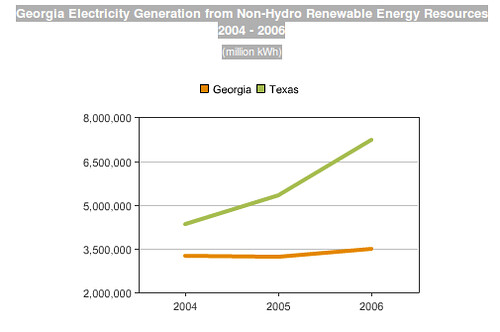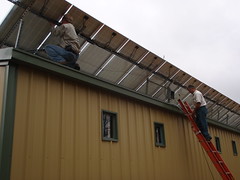
Chris Kahn writes in Mail Times about
Solar power coming to a store near you:
Solar technology is going where it has never gone before: onto the shelves at retail stores where do-it-yourselfers can now plunk a panel into a shopping cart and bring it home to install.
Lowe’s has begun stocking solar panels at its California stores and plans to roll them out across the country next year.
This shows how far the highest of the high-tech alternative energy technologies has come. Solar power is now accessible to anyone with a ladder, a power drill, and the gumption to climb up on a roof and install the panels themselves.
You can’t get tham at Lowe’s of Valdosta yet.
The article also says Home Depot offers panels on its web pages.
In either case, to get the Georgia 35% state tax installation rebate you’d have to have them installed by a certified Georgia solar installer.
Even so, commodity solar panels in doit it yourself stores is a big step.
If nothing else, it should keep prices down on panels bought through installers.
And if you really want to buy them yourself, what appear to be the same 80 watt Sharp panels Lowe’s lists on its web pages go for $343 at Affordable Solar online.
The article says Lowe’s sells 175 watt panels; Home Depot lists those for $997.97. Affordable Solar list them for $594; plus shipping, of course. Solar Blvd lists them for $541.50.
Or you can buy panels with more wattage, or more panels.
If you want to buy your own solar panels, you can.
You can also find out your local rebates and sales tax exemptions online from DSIRE.
 The Georgia Department of Natural Resources (DNR) Environmental Protection Division (EPD) Air Protection Branch issued a
Press Release on April 12, 2010 announcing a meeting:
The Georgia Department of Natural Resources (DNR) Environmental Protection Division (EPD) Air Protection Branch issued a
Press Release on April 12, 2010 announcing a meeting:

.jpg)





